
Industrials products and automation company Regal Rexnord (NYSE:RRX). missed Wall Street’s revenue expectations in Q4 CY2024, with sales falling 9.1% year on year to $1.46 billion. Its non-GAAP profit of $2.34 per share was 5.2% below analysts’ consensus estimates.
Is now the time to buy Regal Rexnord? Find out by accessing our full research report, it’s free.
Regal Rexnord (RRX) Q4 CY2024 Highlights:
- Revenue: $1.46 billion vs analyst estimates of $1.49 billion (9.1% year-on-year decline, 1.9% miss)
- Adjusted EPS: $2.34 vs analyst expectations of $2.47 (5.2% miss)
- Adjusted EBITDA: $317.6 million vs analyst estimates of $340.2 million (21.7% margin, 6.6% miss)
- Adjusted EPS guidance for the upcoming financial year 2025 is $10 at the midpoint, missing analyst estimates by 3.2%
- Operating Margin: 8.8%, down from 11% in the same quarter last year
- Free Cash Flow Margin: 12.6%, up from 10.6% in the same quarter last year
- Organic Revenue fell 1.4% year on year (-8.1% in the same quarter last year)
- Market Capitalization: $10.26 billion
Company Overview
Headquartered in Milwaukee, Regal Rexnord (NYSE:RRX) provides power transmission and industrial automation products.
Engineered Components and Systems
Engineered components and systems companies possess technical know-how in sometimes narrow areas such as metal forming or intelligent robotics. Lately, automation and connected equipment collecting analyzable data have been trending, creating new demand. On the other hand, like the broader industrials sector, engineered components and systems companies are at the whim of economic cycles. Consumer spending and interest rates, for example, can greatly impact the industrial production that drives demand for these companies’ offerings.
Sales Growth
A company’s long-term performance is an indicator of its overall quality. While any business can experience short-term success, top-performing ones enjoy sustained growth for years. Luckily, Regal Rexnord’s sales grew at an excellent 13.3% compounded annual growth rate over the last five years. Its growth beat the average industrials company and shows its offerings resonate with customers.
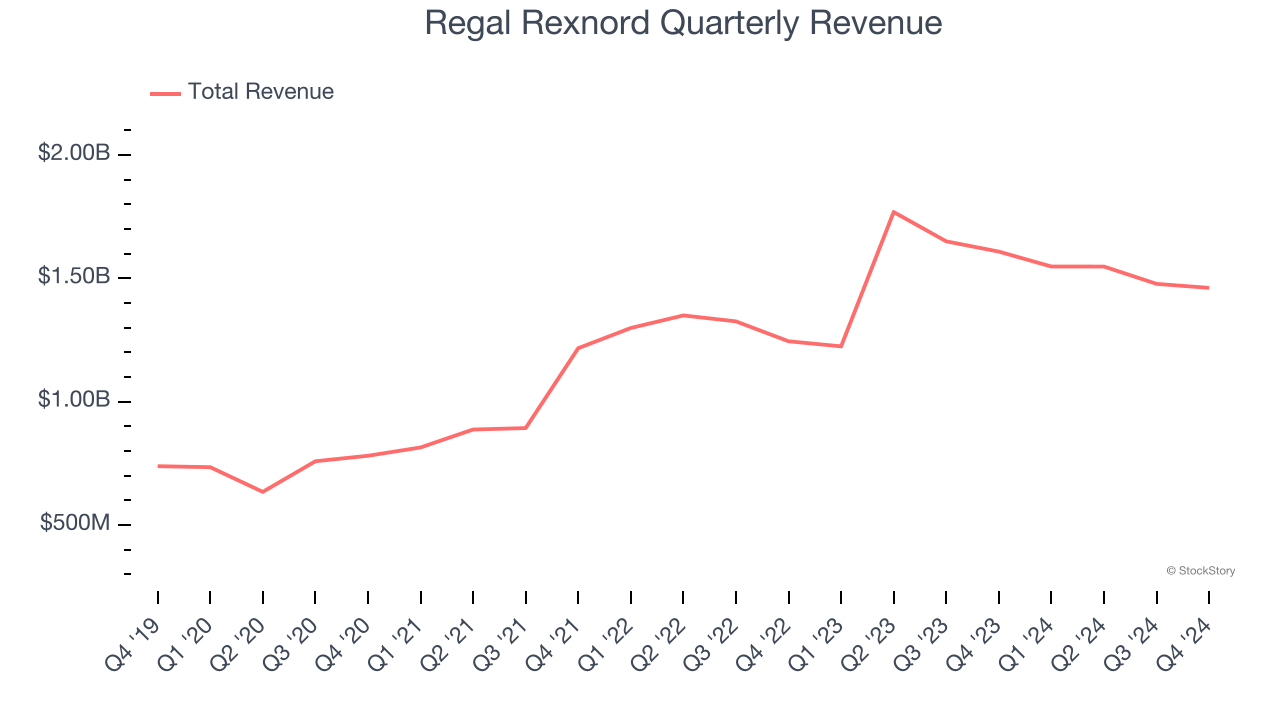
We at StockStory place the most emphasis on long-term growth, but within industrials, a half-decade historical view may miss cycles, industry trends, or a company capitalizing on catalysts such as a new contract win or a successful product line. Regal Rexnord’s annualized revenue growth of 7.5% over the last two years is below its five-year trend, but we still think the results were respectable. 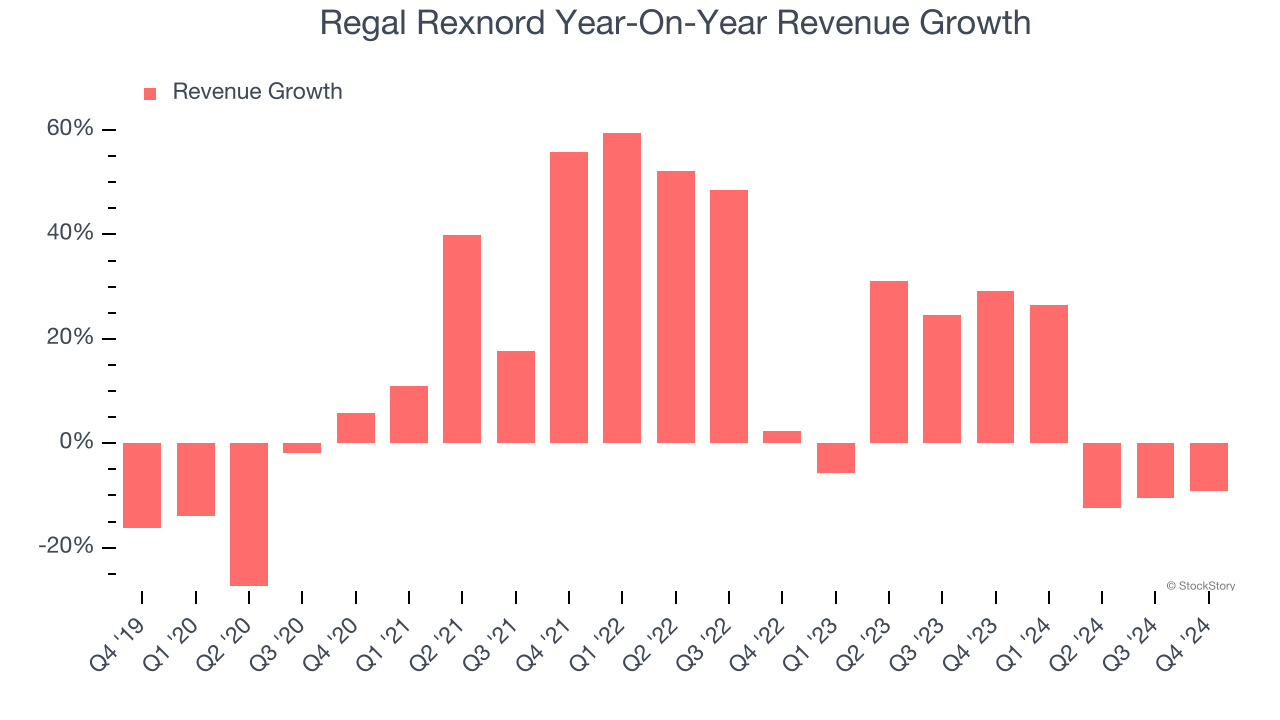
We can dig further into the company’s sales dynamics by analyzing its organic revenue, which strips out one-time events like acquisitions and currency fluctuations that don’t accurately reflect its fundamentals. Over the last two years, Regal Rexnord’s organic revenue averaged 6.6% year-on-year declines. Because this number is lower than its normal revenue growth, we can see that some mixture of acquisitions and foreign exchange rates boosted its headline results. 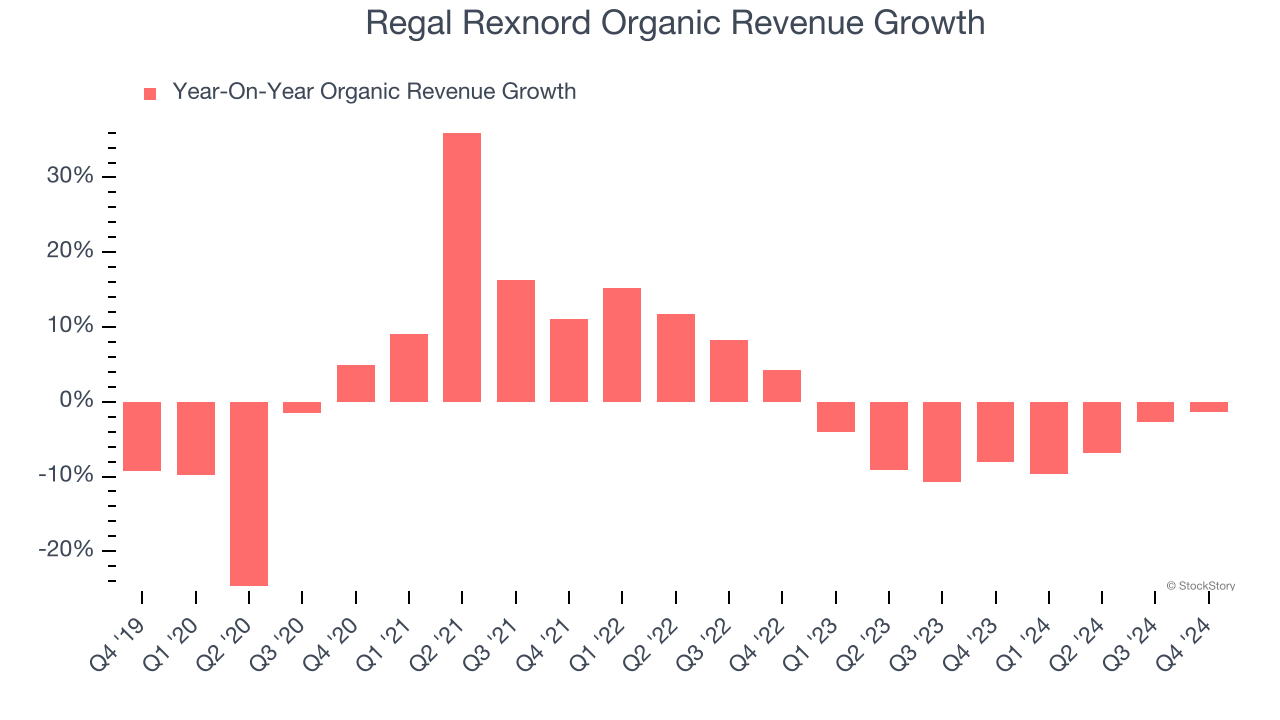
This quarter, Regal Rexnord missed Wall Street’s estimates and reported a rather uninspiring 9.1% year-on-year revenue decline, generating $1.46 billion of revenue.
Looking ahead, sell-side analysts expect revenue to remain flat over the next 12 months, a deceleration versus the last two years. This projection doesn't excite us and implies its products and services will face some demand challenges.
Unless you’ve been living under a rock, it should be obvious by now that generative AI is going to have a huge impact on how large corporations do business. While Nvidia and AMD are trading close to all-time highs, we prefer a lesser-known (but still profitable) stock benefiting from the rise of AI. Click here to access our free report one of our favorites growth stories.
Operating Margin
Operating margin is one of the best measures of profitability because it tells us how much money a company takes home after procuring and manufacturing its products, marketing and selling those products, and most importantly, keeping them relevant through research and development.
Regal Rexnord has done a decent job managing its cost base over the last five years. The company has produced an average operating margin of 9.6%, higher than the broader industrials sector.
Analyzing the trend in its profitability, Regal Rexnord’s operating margin might have seen some fluctuations but has generally stayed the same over the last five years . Shareholders will want to see Regal Rexnord grow its margin in the future.
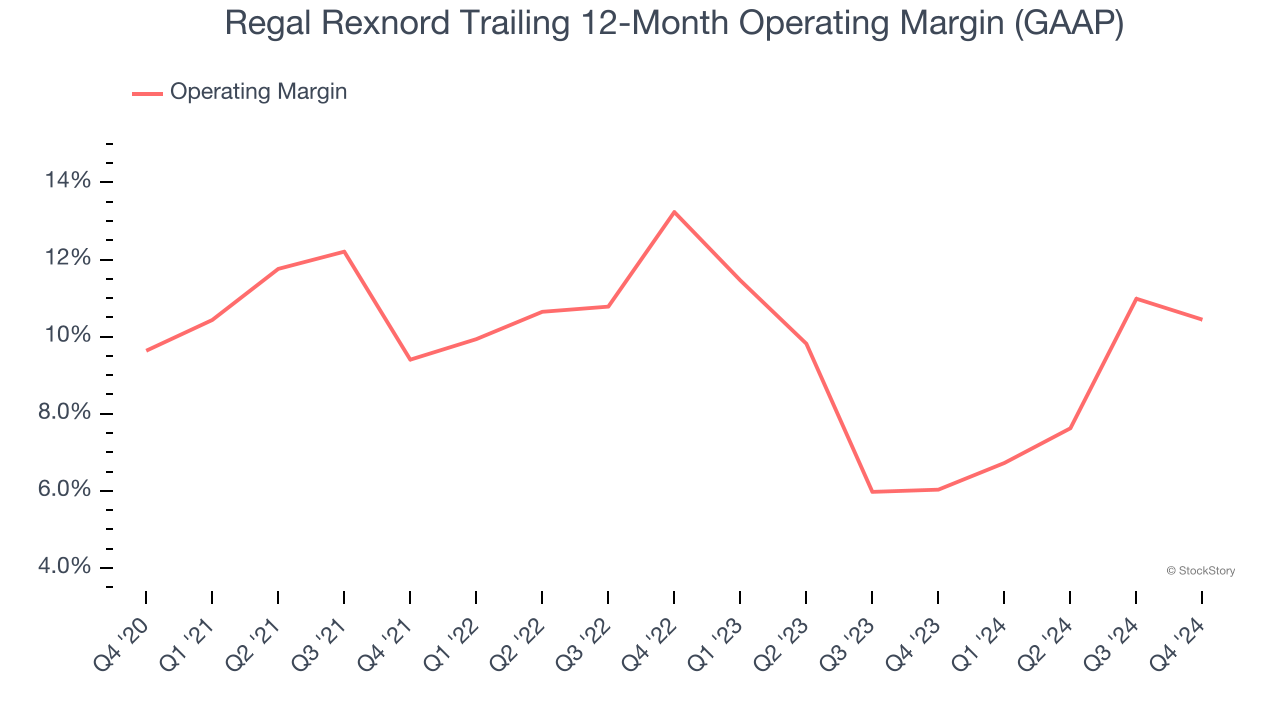
In Q4, Regal Rexnord generated an operating profit margin of 8.8%, down 2.2 percentage points year on year. Since Regal Rexnord’s operating margin decreased more than its gross margin, we can assume it was recently less efficient because expenses such as marketing, R&D, and administrative overhead increased.
Earnings Per Share
Revenue trends explain a company’s historical growth, but the long-term change in earnings per share (EPS) points to the profitability of that growth – for example, a company could inflate its sales through excessive spending on advertising and promotions.
Regal Rexnord’s EPS grew at a solid 10.7% compounded annual growth rate over the last five years. However, this performance was lower than its 13.3% annualized revenue growth, telling us the company became less profitable on a per-share basis as it expanded.
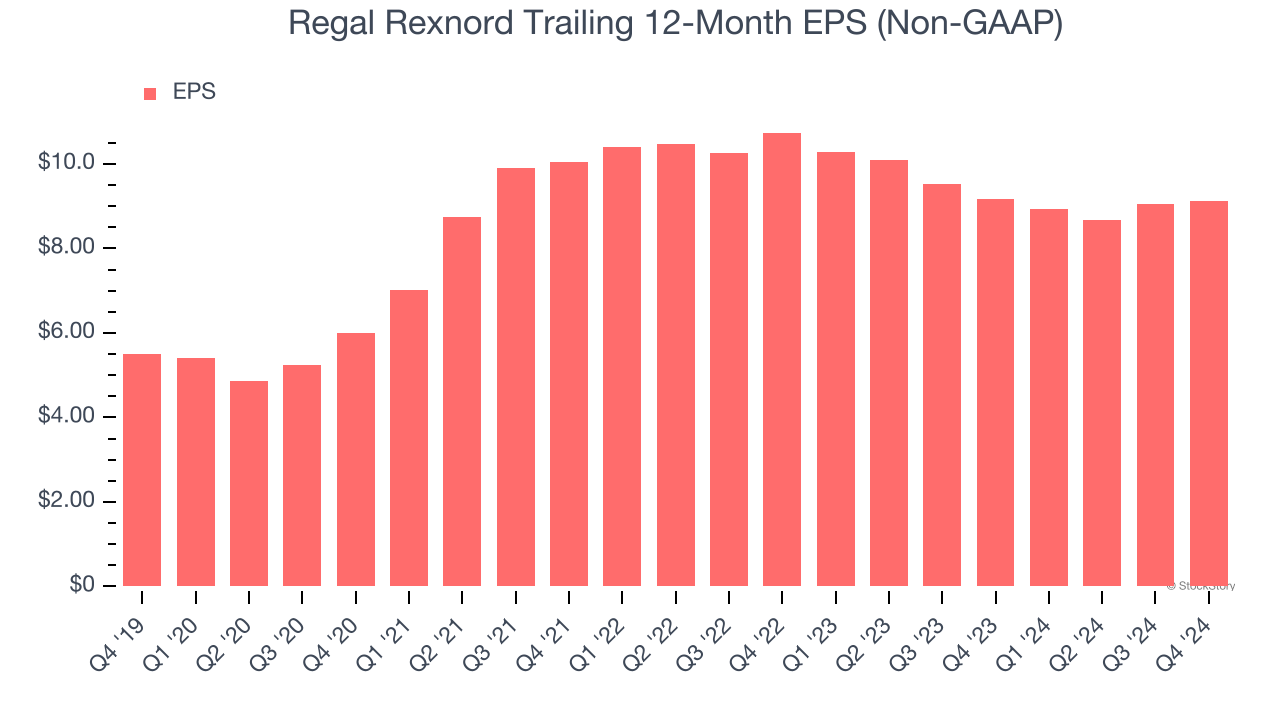
We can take a deeper look into Regal Rexnord’s earnings to better understand the drivers of its performance. A five-year view shows Regal Rexnord has diluted its shareholders, growing its share count by 62%. This has led to lower per share earnings. Taxes and interest expenses can also affect EPS but don’t tell us as much about a company’s fundamentals. 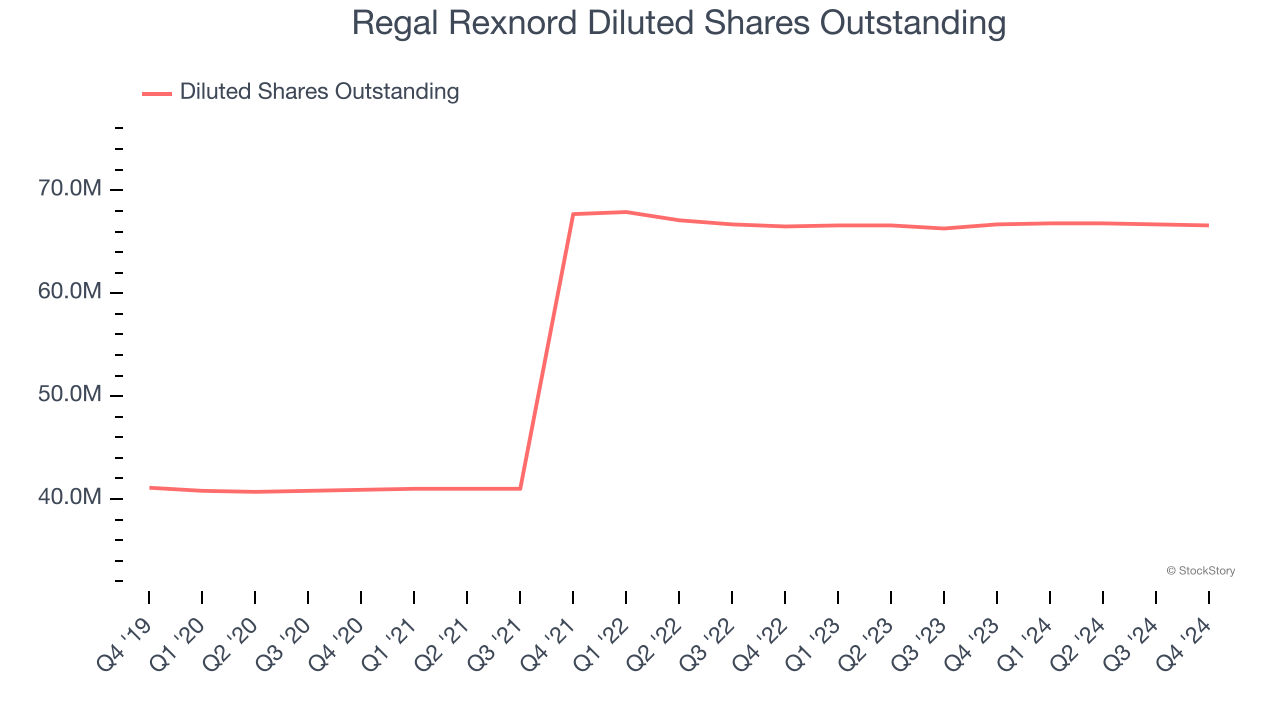
Like with revenue, we analyze EPS over a shorter period to see if we are missing a change in the business.
For Regal Rexnord, its two-year annual EPS declines of 7.9% mark a reversal from its (seemingly) healthy five-year trend. We hope Regal Rexnord can return to earnings growth in the future.
In Q4, Regal Rexnord reported EPS at $2.34, up from $2.28 in the same quarter last year. Despite growing year on year, this print missed analysts’ estimates, but we care more about long-term EPS growth than short-term movements. Over the next 12 months, Wall Street expects Regal Rexnord’s full-year EPS of $9.12 to grow 13.2%.
Key Takeaways from Regal Rexnord’s Q4 Results
We struggled to find many positives in these results. Its full-year EPS guidance missed significantly and its EBITDA fell short of Wall Street’s estimates. Overall, this was a softer quarter. The stock traded down 1.9% to $152 immediately following the results.
Regal Rexnord’s latest earnings report disappointed. One quarter doesn’t define a company’s quality, so let’s explore whether the stock is a buy at the current price. The latest quarter does matter, but not nearly as much as longer-term fundamentals and valuation, when deciding if the stock is a buy. We cover that in our actionable full research report which you can read here, it’s free.
